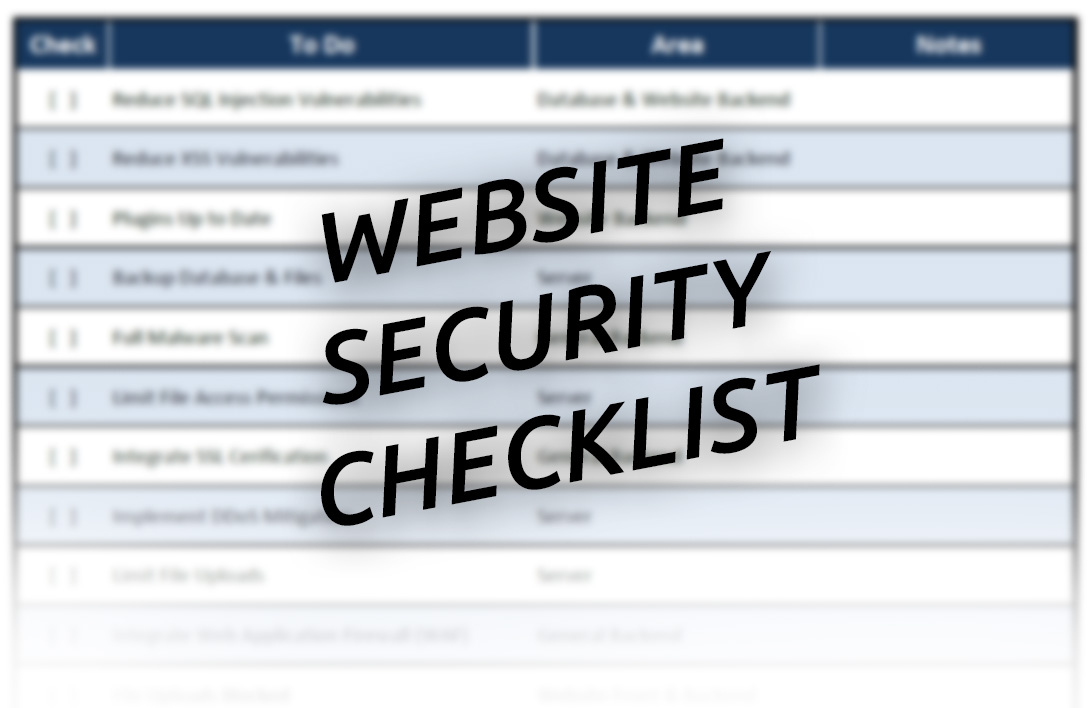eCommerce is the key to economic growth across the business world today. Businesses can easily promote their products using online businesses, from start-ups to large corporations. With the high demand for eCommerce stores in today’s technology-driven society, it’s crucial to create an online store to start relevant in a highly competitive business world.
If you’re still questioning whether to create your own eCommerce store, consider how the trend is attracting global attention. Let’s discuss the perks of eCommerce and how to seamlessly implement an online store into your business website.
The Perks of Creating an eCommerce Store

There are several advantages to creating an eCommerce store for your business.
1. You Can Save Money with an Online Store
Establishing an online store can help you save money in the long run. For example, some businesses can move their products online, saving money on the costs of keeping a physical brick-and-mortar location. This doesn’t only save on the expense of holding a physical space, but it also saves on utilities, office supplies, and other operational costs. Even if you do keep a physical location, you can downgrade your space by offering your products online. Either way, you cut significant expenses with either scenario.
2. You Can Expand Your Business Internationally
Another great advantage of having an eCommerce store is that you can sell your goods anywhere in the world. Consumers won’t need to travel to your physical location to view your products. You can reach a larger audience and make your products and services available to consumers all over the world, regardless of their location.
3. You Can Grow Your Brand with an Effective eCommerce Store

Having an effective eCommerce shop can help you grow your business. You can create new revenue streams and attract new clients. It can also help increase the variety of goods and services you offer. Building an eCommerce store is one of the best methods of building your brand in today’s business world. With eCommerce, you can reach your clients whenever and wherever they are shopping from, without having to worry about time and location restrictions. You can reach many more potential clients than possible when you only have a brick-and-mortar.
4. eCommerce Provides Additional Marketing Possibilities
Your eCommerce store is one of the most effective marketing tools you will ever have as a business owner. You can promote your products and services using various online methods that aren’t available to brands that only have physical locations. SEO, social media marketing, email marketing, pay-per-click advertising, and other online strategies are available and easy to use to build your brand.
5. Your Business is Always Open
One of the most significant advantages of creating an online store is that your business is open 24/7/365. Customers can shop while you sleep and you don’t even need to have an employee working all day to cater to your clients. Orders typically come in through a dedicated system that processes the payment and prepares your products to be shipped. If a customer wants to go shopping in the middle of the night, they can purchase at their fingertips. This increases order volumes and improves sales revenue.
6. Sales Grow Substantially

Speaking of sales growth, everything about your eCommerce store targets an increase in sales. Since sales revenue is the core of your business, this should be your top priority when trying to grow your brand. As more customers buy your goods and services online, you’ll see a spike in sales. This also increases your customer base, improves products using customer feedback, and offers 24-hour support to current and new consumers. You can also take advantage of analytic tools that help target new customers and effectively market new sales to current customers.
7. Launching an eCommerce Store Is Affordable
Finally, launching an online store is easy, affordable, and comes with little to no risk. It will bring you a significant return on your investment because it is a huge opportunity to make more money and build your customer base. Once your store is created by a reliable Vancouver web development company, you can work with a professional marketing team to build an effective business strategy that fosters business growth.
How to Build an eCommerce Store that Brings Significant Return
Now that you understand the perks of having an eCommerce store, let’s talk about the next steps. eCommerce revenue is worth over $476 billion and continues to grow. With over 40% of shoppers using the internet to research, explore, and purchase products and services, you can’t afford to stay offline if you want to reach customers. Starting a dedicated eCommerce website gives you the ability to control the customer experience and make informed choices that improve your brand.
Knowing the amazing sales potential of an eCommerce store may leave you thinking that building your own online store is complicated and expensive. In reality, building an eCommerce website is much more simple than you can imagine. eCommerce solutions do most of the work for you. Once you invest in your site, it should bring you a return on your investment for years to come. Still, you need to be sure you hire the right Vancouver eCommerce website developer to build a site that is scalable and can grow and evolve with your business.
Here are the steps you need to take to build an eCommerce store:
1. Select the Right eCommerce Platform
Finding the right eCommerce platform is the first and most important step in your journey. You’ll need to find a platform that meets your needs and effectively sells your products and services. There are several things to consider and options to choose from when choosing your eCommerce platform.
Types of eCommerce Platforms
There are three primary types of eCommerce platforms to choose from, with each created to serve different kinds of businesses. Since they all have different functionality, it’s best to discuss your needs with a professional Vancouver website development company. While our team is here to help you find the most beneficial platform for your business needs, it’s always good to understand your options. eCommerce platforms call into one of three categories:
1. Open Source
As the name suggests, open source platforms offer their source code freely to everyone who wants to use it. You can install these platforms for free and they offer endless customization options. However, open source platforms typically require advanced coding knowledge. Since security breaches are always a concern, you’ll need to invest more in advanced security features and hire a team that knows the ins and outs of their complicated coding.
2. SaaS
Software as a Service, or SaaS, is offered as a subscription service, so you can expect to have an ongoing fee to pay. These systems are typically easy to use, scalable, and have solid security. They can easily handle checkout and payment processes because they’re specifically designed for your eCommerce store. The main concern of these platforms is the expense. While they come with significant benefits, you’ll need to pay your monthly subscription fee, transaction fees, and extra plug-in expenses. Some services may also be restricted which can require premium services to ensure you get the design you desire.
3. Headless Commerce
Headless commerce builds your shopping cart and the display layer of your eCommerce site separately. This means you can use your content management system, a digital experience platform, progressive web app, and other technology on the front end and your eCommerce engine on the back. These platforms allow you to easily change the look of your store, giving you more creative control than other options.
Most Popular eCommerce Website Platforms
Your website platform is the foundation of your online store, so you’ll need to choose wisely. The good news is that we’ll help you pick the best platform for your specific business needs. Here are some options:
1. BigCommerce
BigCommerce is a SaaS solution known for its scalability. It comes with a significant number of built-in features. This builder comes with multi-layered security that keeps your data safe. It can also support payment methods from international customers.
2. Shopify
Shopify is also a SaaS solution known for its easy, seamless setup. It comes with an extensive range of plug-ins available at an added expense. So, if you need a significant number of plug-ins, it can be costly. It is an excellent option for high-traffic websites because it can handle a large number of transactions per minute.
3. Magento
Magento is a self-hosted solution that gives you the creative freedom to highlight your brand. It comes with a wide range of integration options, but requires someone with advanced coding knowledge.
4. WooCommerce
Another popular option is the WooCommerce open-source builder. It is a WordPress plug-in and free to install. This is a popular option for those with an existing WordPress site looking to integrate an eCommerce store onto their existing website. WooCommerce is flexible, easily customizable, and secure.
eCommerce Hosting

Once you’ve picked your website platform, you’ll need to consider hosting. Hosting is where the data from your eCommerce store is held. Since it can impact your website security, it’s crucial to pick the right plan. You’ll choose between cloud hosting and on-premise hosting. Each has its own advantages and disadvantages. At BragDeal, we offer various hosting packages that can be customized to meet your specific business needs. Contact us today to discuss your options and create a package that works best for your eCommerce website needs.
Consider Functionality

There are also several things you’ll need to consider when it comes to the functionality of your eCommerce site. Your goal should be to give your customers the best overall user experience. Here are some things you’ll need to discuss:
1. Website Performance
You’ll need to make sure that whatever platform you choose works consistently to support your website. Discuss performance and uptime with your Vancouver website design team. Your goal should be to ensure that your website is available when your customers want to shop. This makes your site easier to manage and ensures client satisfaction.
2. Website Traffic
You’ll also need to discuss website traffic capacity. How much site traffic do you currently have and how much do you expect as your site grows? Can your platform meet your traffic needs? Does it have the scalability to grow with your business? Can your website handle bursts in traffic for high sales days like Black Friday and Cyber Monday?
3. Mobile Optimization
Since over 70% of consumers shop from the convenience of their mobile devices, mobile optimization is crucial to your eCommerce store success. Make sure your website is responsive and optimized for all device sizes. Find new ways to enhance the customer experience through mobile technology.
4. Payments and Data
Finally, you need to work hard to protect your business and customer data. The last thing you want is an eCommerce store that leaves your customers’ sensitive information susceptible to data breaches. Talk to your eCommerce website team to discuss the most secure and advantageous payment and data solutions.
2. Purchase Your Domain
If you already have a domain, it’ll need to be transferred. However, if you don’t have a domain, consider these tips before purchasing one:
1. Avoid Creative Spellings
Your domain should be easy to remember and spell, so don’t get too creative when it comes to your domain. Of course, you don’t need to be overly formal with your spelling, but make sure your domain is easy to spell. You’ll also want a domain that is easy to pronounce. Don’t add unnecessary hyphens or numbers because it’ll make your website domain more difficult for your customers to remember.
2. Don’t Be Too Generic
The biggest problem with generic names is that they are easily forgettable. You also run the risk of sending your visitors to the website of a different company with a similar name if they type your domain wrong. Create a brandable name that’s easy to remember, so your domain can stand out to potential customers.
3. Keep It Short and Simple
Finally, one of the best practices when choosing a domain is to keep it short and simple. Your domain should be no more than 14 characters in length. Keeping it short and simple makes it easy for your customers to remember. It can also help with your SEO and marketing strategies.
3. Find a Quality, Experienced Developer
Your eCommerce website developer can make or break your online business. While it’s possible to build an eCommerce store independently, using a professional will ensure you get the functionality and design you need to effectively market your business. Find a reliable, experienced developer who understands your vision and can build your website within your timeline and budget restrictions.
4. Pick Your eCommerce Theme

Themes or templates are ready-built pages that can be customized to reflect your brand style. When selecting your theme, consider the following:
- Ensure your customer navigation is smooth, and seamless, and creates an excellent user experience.
- Choose a homepage style that complements your brand.
- Discuss customization options in advance to ensure you can tweak your theme to meet your needs and requirements.
Once you’ve picked the right eCommerce theme, discuss customization with your design team. This will help keep your website trendy and unique.
5. Add Your Products
Your product pages are the most vital pages of your website. They highlight your products and services and sell them to your customers. Make sure you display your products effectively with eye-catching images, meaningful product descriptions, and easy-to-navigate product categories.
6. Setup Payment Methods
Offering the right payment method is key to closing a sale. If your payment methods are limited or complicated, your customers may abandon the cart and go to a competitor. Make sure your payment options are easy to use and meet your processing needs. You can choose from redirects, checkout on-site with payment off-site, and on-site options. Discuss the ease of integration, compliance, security, and fees before choosing.
7. Create Shipping Settings

Shipping is another critical component of your eCommerce store, which can also make or break the sale. Before you create your online store, determine your shipping policy. You will work with your web development team to select the right eCommerce shipping solution.
8. Test, Test, and Test Again
Before you make your eCommerce store live, you’ll need to test. Your website development team should do their own Q&A process, but you can also test on your own. Make sure that when your website goes live, it works exactly as expected. This will ensure the ultimate customer experience and increase sales. Ask these questions while testing:
- Does the checkout work as expected?
- Is the eCommerce store functioning as discussed?
- Does the store display and work effectively on your mobile device?
- Does your eCommerce store work on all different browsers?
- Have you checked all settings like language, time zone, store contact information, taxes, and other essentials?
9. Publish Your eCommerce Store
Once you’ve tested thoroughly, your eCommerce store is ready to publish. A quality store does more than just sell products. It’s where you can build your brand, satisfy your customers, and increase sales revenue.
Invest in the Future of Your Business with a Successful Online Store
Now that you understand the importance of building an effective eCommerce store, it’s time to discuss your options. Our team of qualified website developers in Vancouver is here to get you started. Whether you’re adding to an existing online store or building from scratch, we can help you get the best results to grow your business. Talk to one of our eCommerce experts today to take your business to the next level.



